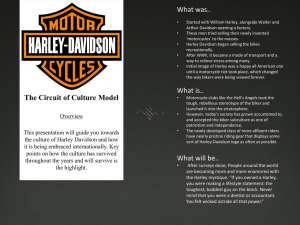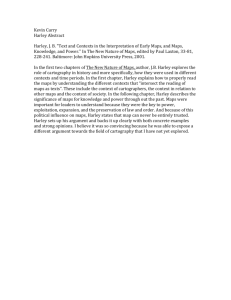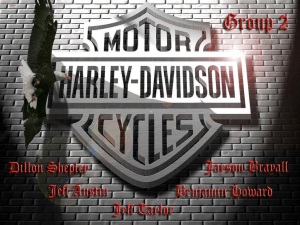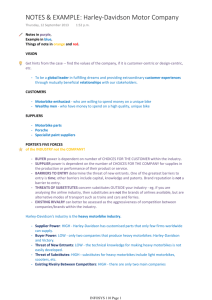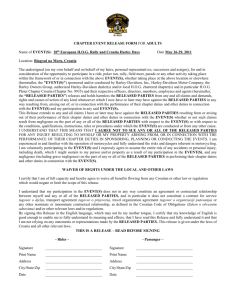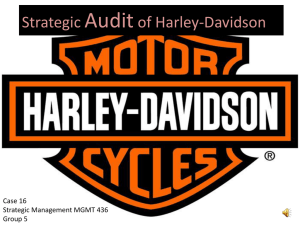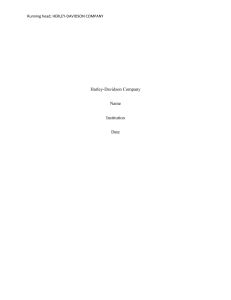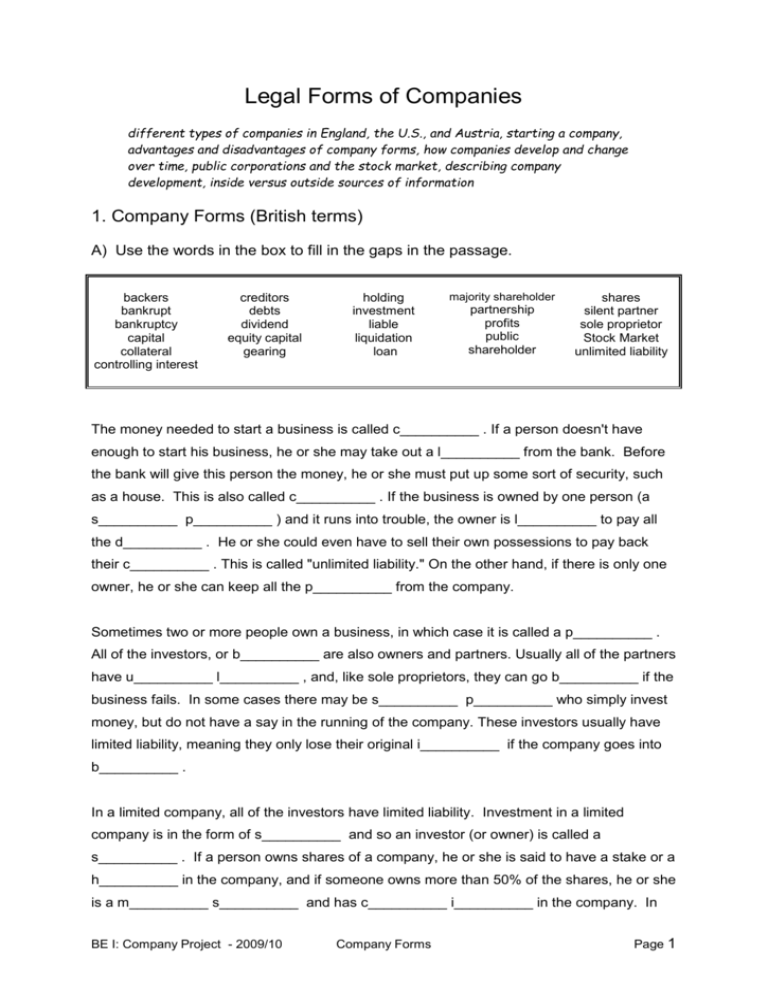
Legal Forms of Companies
different types of companies in England, the U.S., and Austria, starting a company,
advantages and disadvantages of company forms, how companies develop and change
over time, public corporations and the stock market, describing company
development, inside versus outside sources of information
1. Company Forms (British terms)
A) Use the words in the box to fill in the gaps in the passage.
backers
bankrupt
bankruptcy
capital
collateral
controlling interest
creditors
debts
dividend
equity capital
gearing
holding
investment
liable
liquidation
loan
majority shareholder
partnership
profits
public
shareholder
shares
silent partner
sole proprietor
Stock Market
unlimited liability
The money needed to start a business is called c__________ . If a person doesn't have
enough to start his business, he or she may take out a l__________ from the bank. Before
the bank will give this person the money, he or she must put up some sort of security, such
as a house. This is also called c__________ . If the business is owned by one person (a
s__________ p__________ ) and it runs into trouble, the owner is l__________ to pay all
the d__________ . He or she could even have to sell their own possessions to pay back
their c__________ . This is called "unlimited liability." On the other hand, if there is only one
owner, he or she can keep all the p__________ from the company.
Sometimes two or more people own a business, in which case it is called a p__________ .
All of the investors, or b__________ are also owners and partners. Usually all of the partners
have u__________ l__________ , and, like sole proprietors, they can go b__________ if the
business fails. In some cases there may be s__________ p__________ who simply invest
money, but do not have a say in the running of the company. These investors usually have
limited liability, meaning they only lose their original i__________ if the company goes into
b__________ .
In a limited company, all of the investors have limited liability. Investment in a limited
company is in the form of s__________ and so an investor (or owner) is called a
s__________ . If a person owns shares of a company, he or she is said to have a stake or a
h__________ in the company, and if someone owns more than 50% of the shares, he or she
is a m__________ s__________ and has c__________ i__________ in the company. In
BE I: Company Project - 2009/10
Company Forms
Page 1
other words, he or she is the boss. Some or all of the profits of a limited company are paid
out to the shareholders in the form of a d__________ .
There are both private and p__________ limited companies. In private limited companies
(which have the abbreviation "ltd." after their names,) a shareholder can only sell his or her
shares when the rest of the shareholders agree. In public limited companies (abbreviation:
"plc"), shares are bought and sold freely on the S__________ M__________ . Besides the
money they get from selling shares (called share capital or e__________ c__________ ),
limited companies can also borrow capital from banks or other institutions (called loan
capital). The ratio of a company's loan capital to equity capital is known as its g__________
. A highly geared company has a large proportion of loan capital. When a limited company
fails, it goes into l__________ , meaning all its assets are sold off to pay creditors.
B) Fill in the chart using the information from above.
Type
Sole
Proprietorship
plc
Abbreviation
(2 – 50)
Number of
Owners
partners
Who owns it
limited
Liability of
owners
Owners'
earnings
profit after
tax
If the business
fails . . .
If an owner
sells . . .
C) Now answer the questions in complete sentences:
a)
b)
c)
d)
e)
How can a sole proprietor protect his/her private assets in the case of bankruptcy?
How realistic is it that a public limited company has a majority shareholder?
What advantage can equity capital have over loan capital?
What is the interest rate for loans right now?
What is the difference between “bankruptcy” and “liquidation”? Are these the only
two options for a failing company?
f) When a company goes into liquidation, what all can be sold to pay off creditors?
BE I: Company Project - 2009/10
Company Forms
Page 2
2. Setting Up a Limited Company
The diagram below shows you how ABC Ltd. was set up.
Roger
$20,000
Margaret
$55,000
ABC Ltd.
$100,000
(20,000 x $5)
Mike
$15,000
Frank
$10,000
(Profit after first year:
$20,000)
Now make complete sentences about ABC Ltd using the words below. Include
names, numbers and specific information in your sentences. In order to make sure
you use an appropriate level of language, there is an added rule: you may not use
any of the following verbs in your sentences – to be, to exist, to have, to get, to
make, to do, to give, to put, or to take.
a) investors, equity capital
b) majority shareholder, stake, controlling interest
c) shares, nominal value (or "face value", or "par value")
d) profit, dividend per share
e) return, investment
BE I: Company Project - 2009/10
Company Forms
Page 3
3. Advantages and Disadvantages
Scrambled up on the next page are 24 positive and negative aspects of the four
different types of companies. First decide whether each one is an advantage or a
disadvantage, and then which type of company it applies to. (Some points can be
applied to more than one type of company, but there is a best answer. When you
are finished you should have three advantages and three disadvantages for each
company type.)
Advantages
Disadvantages
Sole Proprietorship
Partnership
Private Limited Company
Public Limited Company
1. Shareholders have limited liability.
2. Finances are
confidential
5. They have continuity - the board of 6. Freedom to do as
directors continues to run the
he or she likes in
business whoever dies or retires.
running the
business.
BE I: Company Project - 2009/10
3. There is no continuity of
business if a partner dies
or goes bankrupt
4. Shares can not
normally be sold to the
public - this limits the
capital.
7. Management can become 8. Any losses are shared
impersonal, inflexible or
among the partners.
inefficient and more staff can
be expensive.
Company Forms
Page 4
9. Limited capital
10. More capital
restricts new projects or available
expansion plans.
13. Capital is still limited for
large scale business.
11.Management and ownership can 12.Possible disagreements
be separate. Shareholders can
between partners - personal or
exercise some control in the annual professional.
general meetings.
14. The company has a
legal identity and can be
treated like a person under
the law.
15. Management can be criticized
and hindered by shareholders who
do not fully understand a
situation.
17. Unlimited liability. If the business 18. A lot of information that the
fails, the owner is responsible for all company would like to keep
the debts and may lose his or her
confidential must be made public
own possessions.
21. Easy to set up. No complex
legal problems.
16. With so much
capital. large scale
projects and
investments can be
undertaken.
19. Owner keeps
all of the profits.
20. Carefully audited
accounts must be
kept for annual
inspection.
22. Owner tied to the business. 23. They can provide more
After business hours there can capital than partnerships.
still be a lot of work to be
done.
24. With legal,
accountancy and
government fees, they
are very expensive to
set up.
BE I: Company Project - 2009/10
Company Forms
Page 5
4. American and Austrian Forms of Companies
A) Unlike the British or the Austrians, Americans do not emphasize the distinction
between private and public companies. All limited companies are called
"corporations" and get the abbreviation "inc.", which is short for "incorporated".
Listen to the explanation and write the American equivalent of the British
companies listed below.
British
American
Austrian
sole proprietorship
partnership
limited partnership
private limited company
public limited company
B) Do you know any other forms of business in Austria? In other countries? List
them below and be prepared to explain what they are to the class. Fill the
abbreviations into the chart above in the same row as their nearest equivalent.
5. Problem Solving
In a small group read the situations below and then discuss what type of business
should be set up in each case. There is not one right or wrong answer. Be prepared
to justify your decision to the class.
a) You and your spouse (husband or wife) want to open up a grocery shop in a
small village. There is already one store, owned by an old lady. Your bank will
lend you all the money you need.
b) Two couples, one with young children want to buy a small hotel, which all the
adults will work in.
c) You want to sell fruit and vegetables at a stall in the market. You need $1000
starting capital which your parents will lend to you.
d) Two small partnerships would like to merge their companies and expand.
They will need an influx of capital to start off with.
BE I: Company Project - 2009/10
Company Forms
Page 6
6. Company Development (and History)
Readings:
"Harley-Davidson History Overview" http://www.h-dmedia.com/100_mediasite/history/at_a_glance.asp
"Harley-Davidson Turns 100"
http://www.cbsnews.com/stories/2003/08/28/national/printable570603.shtml
As companies grow and expand, their legal form also usually changes to meet the
needs of the new financial and market situations. The two articles below give
accounts of how the company developed over the last 100 years. Read them to do
the tasks below
a) Using both articles, summarize the development of the company in terms of legal
form since its foundation in 1903. (Although the form is often not explicitly
mentioned, try to identify the legal forms based on content of this unit.)
b) In what years was or has Harley-Davidson been listed on the Stock Exchange?
c) The first article above is from an official HD website, the second comes from an
outside source, CBS News Online, and therefore there is a big difference in both
wording and content. Find passages with more critical content in the second
article that is left out of the first.
d) What impression of the company does each of these articles create?
Readings
from CBS News Online
Harley-Davidson Turns 100
MILWAUKEE, Aug. 25, 2003
Harley-Davidson Inc., the iconic motorcycle maker whose bikes call to mind James Dean,
"The Wild One" and leather-clad easy riders cruising down the open road, has reached its
centennial, surviving the Depression and near-bankruptcy to become an American success
story.
Along the way the company has collected thousands of fans who love the freedom-of-theroad lifestyle and the bike's classic chrome-and-metal look, dependability and a distinctive
engine rumble known to Harley riders as "potato, potato, potato."
Harley-Davidson is also celebrating a 46 percent share of the North American heavyweight
motorcycle market, an impressive showing for the company that William Harley and Arthur
Davidson started in a wooden shed.
BE I: Company Project - 2009/10
Company Forms
Page 7
"When they're buying a Harley, they're buying an image and a lifestyle first, and a
motorcycle second," Tim Conder, an industry analyst with A.G. Edwards & Sons Inc.
brokerage firm, said of Harley buyers.
But analysts say Harley has to do more to ensure another 100 years of success.
Aging baby boomers form Harley-Davidson's customer base; the median age of Harley
buyers is 46, compared with an industry average of 38. Nine percent are women, and only
16.5 percent of Harley's revenue comes from outside the United States.
"Harley will rightly argue they have plenty of boomers left. But in the long term, the most
critical issue of Harley is whether buyers will start looking at Harley as the old guy's bike,"
said Don Brown, an independent motorcycle analyst in Irvine, Calif.
Market share figures point out the company's potential weaknesses. Although Harley
dominates the North American heavyweight market, it comes in second to Honda in the
overall U.S. market, according to the Motorcycle Industry Council. Younger riders and those
overseas prefer the faster Japanese sports bikes that cost less than the $15,000-plus price
tags most Harleys carry.
But for Harley fans, owning one of the bikes - known affectionately as "hogs" - has been a
transcendent experience.
"Getting your first Harley is like having your first love, sometimes more," said George Miller,
a 46-year-old Harley rider who works at a Houston refinery.
The company and its hefty motorcycles have left indelible marks on American culture - giving
rise to the rebellious motorcycle culture immortalized in the movies "The Wild One" in 1953
and "Easy Rider" in 1969. That has helped feed a side business of merchandise, including
leather jackets, that bear the famed black, white and orange Harley-Davidson logo.
The company worked to clean up its rough-and-tumble image in the 1980s, but chief
executive officer Jeffrey Bleustein said it still has drawing power.
"It certainly doesn't hurt if there's a little bit of naughty in the image," he said. "We wouldn't
want to be too sterile."
Harley's first century wasn't always easy. The company overcame the advent of the
automobile, the Depression and two World Wars to emerge in 1953 as America's only major
motorcycle maker. But then came a flood of inexpensive imports mid-century and a merger
with American Machine and Foundry Co. in 1969. Harley's quality soured, and AMF put the
company up for sale in 1980.
Bleustein and 12 executives bought Harley in 1981, and began fixing its finances and quality.
At the company's urging, the government imposed five-year tariffs in 1983 on imported
heavyweight motorcycles. That helped, but Harley squeaked by bankruptcy in 1985 after it
finessed new financing.
"You consider in 1981, we were beg, borrowing and stealing every penny we could get to
invest in this company, not knowing where our future might take us," said Willie G. Davidson,
chief styling officer and grandson of a founder. "That's an amazing success story."
To attract new customers, Harley two years ago introduced the sleek V-Rod, its first bike
with a liquid-cooled engine, said Bob Simonson, an industry analyst with William Blair and
Co.
BE I: Company Project - 2009/10
Company Forms
Page 8
Harley is now launching a second bike into the V-Rod's family and is redesigning its
Sportster family of entry-level, lower-priced bikes in an appeal to younger riders and women.
The company also has a subsidiary, Buell Motorcycle, that makes sports bikes, but it only
accounted for 4 percent of Harley's bike shipments last year, according to company figures.
"We are going to continue to give attention to what is our classical product line because it's
classical," Bleustein said. "But at the same time we'll see a lot of other activities that are
geared toward reaching out to other new customers."
© MMIII The Associated Press. All Rights Reserved. This material may not be published, broadcast, rewritten, or redistributed.
from the Harley-Davidson Website
Harley-Davidson Historical Overview
1903
William S. Harley and the Davidson brothers - Walter and Arthur - handcraft their first three
motorcycles in Milwaukee, Wis. William A. Davidson later joins the enterprise.
1909
Introduction of the first Harley-Davidson® V-Twin engine.
1917-1918
Production of 17,000 military motorcycles to serve the U.S. Allied forces in World War I.
1930s
Harley-Davidson and Indian are the sole U.S. motorcycle manufacturers to survive the Great
Depression.
1941- 1945
Nearly all of Harley-Davidson's manufacturing output supports the World War II effort of the
U.S. and its Allies, with more than 90,000 motorcycles used by the Allied forces.
1947
To meet the exploding, postwar demand for motorcycles, Harley-Davidson acquires a
second manufacturing plant - the Capitol Drive facility in Wauwatosa, Wis.
1965
Privately-held family ownership ends with the first public stock offering.
1969
Merger with American Machine and Foundry (AMF). 14,000 motorcycles produced annually.
1973
Motorcycle final assembly moves to York, Pa., to meet growing demand.
1981
Thirteen members of Harley-Davidson's senior management purchase the company from
AMF in a leveraged buyout and implement new quality management and manufacturing
methods.
BE I: Company Project - 2009/10
Company Forms
Page 9
1982
Harley-Davidson successfully petitions the U.S. federal government for tariffs on imported
Japanese motorcycles flooding the U.S. market.
1983
Harley Owners Group (H.O.G.) is established.
1986
Return to public ownership, Harley-Davidson stock begins trading at $11 per share at its
Initial Public Offering. The Motor Company regains its top position in the U.S. super
heavyweight market.
1987
At the request of Harley-Davidson, tariffs on Japanese motorcycles end one year ahead of
schedule. Harley-Davidson is listed on the New York Stock Exchange under the symbol HDI.
1993
Harley-Davidson Financial Services is founded.
1995
Harley-Davidson formalizes its unique Partnership relationship with its unionized workforce.
1998
Harley-Davidson acquires Buell Motorcycle Company, opens a new powertrain plant outside
of Milwaukee in Menomonee Falls, Wis. and builds a new final assembly plant in Kansas
City, Mo. More than one hundred thousand motorcycle enthusiasts come to Milwaukee to
celebrate the Company's 95th birthday.
1999
The Twin Cam 88™ powertrain is introduced on the Dyna and Touring models. Stock splits
for the fifth time since 1986.
2002
Harley-Davidson kicks-off the 100th Anniversary Celebration with the Open Road Tour, the
world's largest rolling birthday party. Open Road Tour stops in 2002 include Atlanta,
Baltimore, Los Angeles, Toronto and Dallas/Ft. Worth.
2003
The Open Road Tour resumes in 2003 with stops in Sydney, Tokyo, Barcelona and
Hamburg. The events resume in the United States with the Ride Home: four journeys across
the United States to Harley-Davidson's home in Milwaukee. Upon arrival in Milwaukee, the
Celebration begins with three days of celebration and special events in and around
Milwaukee. Everything culminates on August 31, 2003 with the Party, the official birthday
celebration in Milwaukee that will launch Harley-Davidson into the next 100 years.
BE I: Company Project - 2009/10
Company Forms
Page 10

